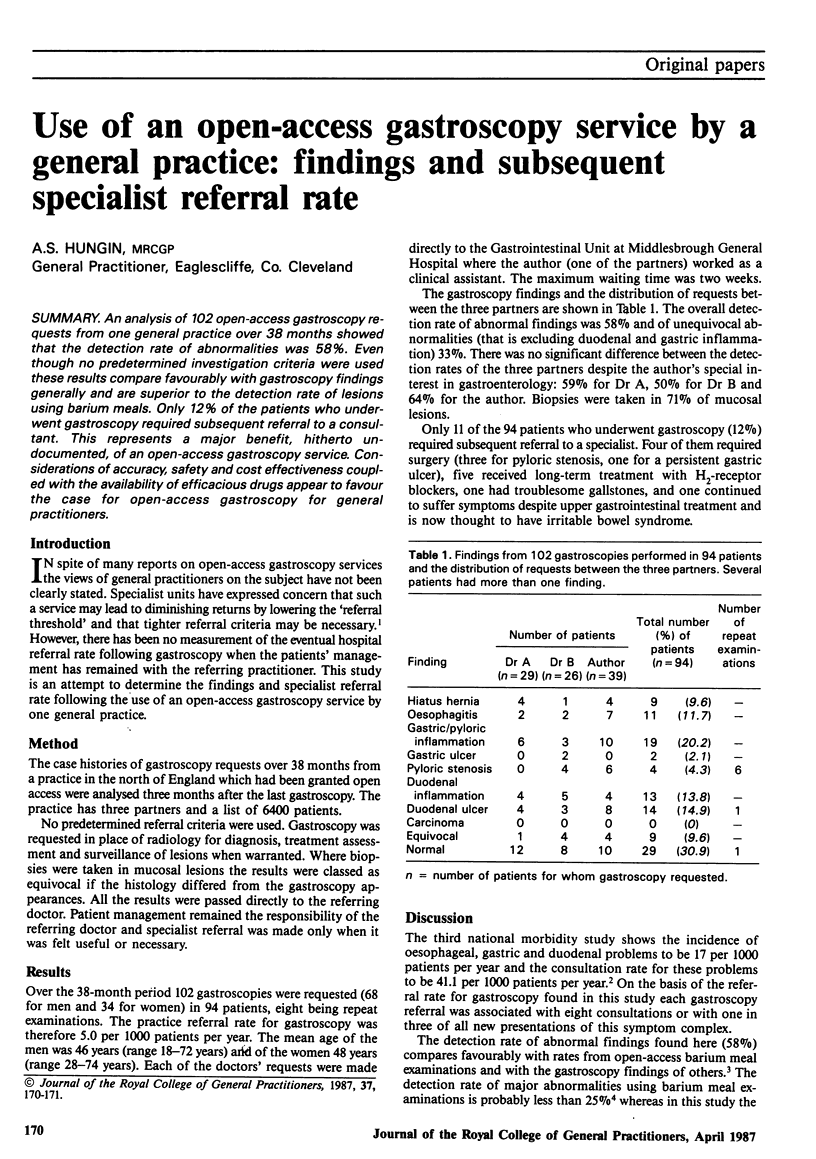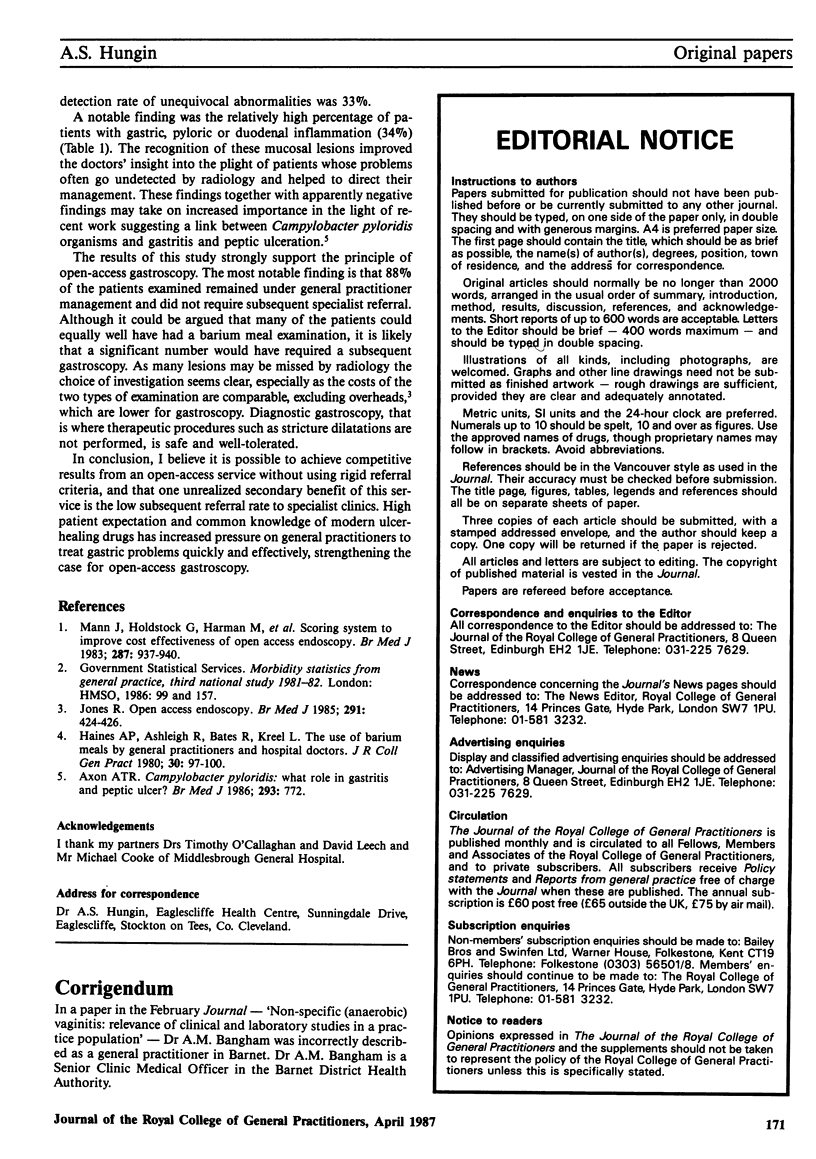Abstract
An analysis of 102 open-access gastroscopy requests from one general practice over 38 months showed that the detection rate of abnormalities was 58%. Even though no predetermined investigation criteria were used these results compare favourably with gastroscopy findings generally and are superior to the detection rate of lesions using barium meals. Only 12% of the patients who underwent gastroscopy required subsequent referral to a consultant. This represents a major benefit, hitherto undocumented, of an open-access gastroscopy service. Considerations of accuracy, safety and cost effectiveness coupled with the availability of efficacious drugs appear to favour the case for open-access gastroscopy for general practitioners.
Full text
PDF

Selected References
These references are in PubMed. This may not be the complete list of references from this article.
- Axon A. T. Campylobacter pyloridis: what role in gastritis and peptic ulcer. Br Med J (Clin Res Ed) 1986 Sep 27;293(6550):772–773. doi: 10.1136/bmj.293.6550.772. [DOI] [PMC free article] [PubMed] [Google Scholar]
- Haines A. P., Ashleigh R., Bates R., Kreel L. The use of barium meals by general practitioners and hospital doctors. J R Coll Gen Pract. 1980 Feb;30(211):97–100. [PMC free article] [PubMed] [Google Scholar]
- Jones R. Open access endoscopy. Br Med J (Clin Res Ed) 1985 Aug 17;291(6493):424–426. doi: 10.1136/bmj.291.6493.424. [DOI] [PMC free article] [PubMed] [Google Scholar]
- Mann J., Holdstock G., Harman M., Machin D., Loehry C. A. Scoring system to improve cost effectiveness of open access endoscopy. Br Med J (Clin Res Ed) 1983 Oct 1;287(6397):937–940. doi: 10.1136/bmj.287.6397.937. [DOI] [PMC free article] [PubMed] [Google Scholar]


